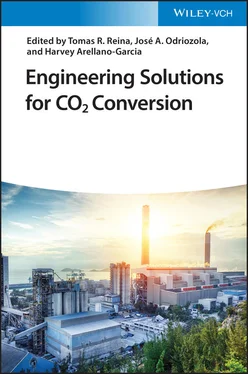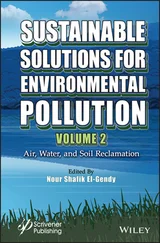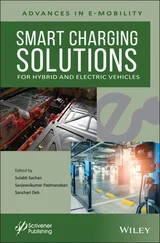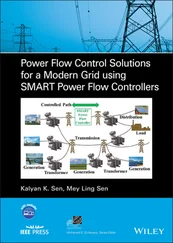6 3 Membranes Technologies for Efficient CO 2Capture–Conversion 3.1 Introduction 3.2 Polymer Membranes 3.3 Oxygen Transport Membranes for CO2 Valorization 3.4 Protonic Membranes 3.5 Membranes for Electrochemical Applications 3.6 Conclusions and Final Remarks References
7 4 Computational Modeling of Carbon Dioxide Catalytic Conversion 4.1 Introduction 4.2 General Methods for Theoretical Catalysis Research 4.3 Characterizing the Catalyst and Its Interaction with CO2 Using DFT Calculations 4.4 Microkinetic Modeling in Heterogeneous Catalysis 4.5 New Trends: High‐Throughput Screening, Volcano Plots, and Machine Learning References
8 5 An Overview of the Transition to a Carbon‐Neutral Steel Industry 5.1 Introduction 5.2 Global Relevance of the Steel Industry 5.3 Current Trends in Emission Policies in the World's Leading Countries in Steel Industry 5.4 Transition to a Carbon‐Neutral Production. A Big Challenge for the Steel Industry 5.5 CO2 Methanation: An Interesting Opportunity for the Valorization of the Steel Industry Emissions 5.6 Relevant Projects Already Launched for the Valorization of the CO2 Emitted by the Steel Industry 5.7 Concluding Remarks References
9 6 Potential Processes for Simultaneous Biogas Upgrading and Carbon Dioxide Utilization 6.1 Introduction 6.2 Overview of Biogas General Characteristics and Upgrading Technologies to Bio‐methane Production 6.3 CCU Main Technologies 6.4 Potential Processes for Biogas Upgrading and Carbon Utilization 6.5 Conclusions References
10 7 Biogas Sweetening Technologies 7.1 Introduction 7.2 Biogas Purification Technologies 7.3 Biogas Upgrading Technologies 7.4 Conclusions References
11 8 CO 2Conversion to Value‐Added Gas‐Phase Products: Technology Overview and Catalysts Selection 8.1 Chapter Overview 8.2 CO2 Methanation 8.3 RWGS Reaction 8.4 CO2 Reforming Reactions 8.5 Conclusions and Final Remarks References
12 9 CO 2Utilization Enabled by Microchannel Reactors 9.1 Introduction 9.2 Transport Phenomena and Heat Exchange in Microchannel Reactors 9.3 Application of Microreactors in CO2 Capture, Storage, and Utilization Processes 9.4 Concluding Remarks and Future Perspectives References
13 10 Analysis of High‐Pressure Conditions in CO 2Hydrogenation Processes 10.1 Introduction 10.2 Thermodynamic Aspects 10.3 Overview of Some Industrial Approaches Focused on the Production of Valuable Compounds form CO2 Using a Carbon Capture and Utilization (CCU) Approach 10.4 Techno‐Economic Considerations for the Methanol Production from a CCU Approach with the Use of High Pressure 10.5 Concluding Remarks References Notes
14 11 Sabatier‐Based Direct Synthesis of Methane and Methanol Using CO 2from Industrial Gas Mixtures 11.1 Overview 11.2 Methane Synthesis of Gas Mixtures 11.3 Applications 11.4 Methanol Synthesis Acknowledgments References
15 12 Survey of Heterogeneous Catalysts for the CO 2Reduction to CO via Reverse Water Gas Shift 12.1 Introduction 12.2 RWGS Catalysts 12.3 Mechanism of RWGS Reaction References
16 13 Electrocatalytic Conversion of CO 2to Syngas 13.1 Introduction 13.2 Production of Syngas 13.3 Electroreduction of CO2/Water Mixtures to Syngas 13.4 Conclusions Acknowledgments References
17 14 Recent Progress on Catalyst Development for CO 2Conversion into Value‐Added Chemicals by Photo‐ and Electroreduction 14.1 Introduction 14.2 CO2 Catalytic Conversion by Photoreduction 14.3 CO 2Catalytic Conversion by Electroreduction References
18 15 Yolk@Shell Materials for CO 2Conversion: Chemical and Photochemical Applications 15.1 Overview 15.2 Key Benefits of Hierarchical Morphology 15.3 Materials for Chemical CO2 Recycling Reactions 15.4 Synthesis Techniques for CS/YS: A Brief Overview 15.5 Future Advancement References
19 16 Aliphatic Polycarbonates Derived from Epoxides and CO 2 16.1 Introduction 16.2 Aliphatic Polycarbonates 16.3 Catalyst Systems for the CO2/Epoxide Copolymerization 16.4 Conclusion References
20 17 Metal–Organic Frameworks (MOFs) for CO 2Cycloaddition Reactions 17.1 Introduction to MOF 17.2 MOFs as Catalysts 17.3 CO 2Cycloadditions 17.4 Oxidative Carboxylation References
21 18 Plasma‐Assisted Conversion of CO 2 18.1 Introduction 18.2 Plasma‐catalytic CO2 Conversion 18.3 Perspective 18.4 Conclusion References
22 Index
23 End User License Agreement
1 Chapter 1 Table 1.1 Advantages of each type of membrane [21]. Table 1.2 Desired solvent properties and its impact on the absorption process... Table 1.3Low heat value (LHV) efficiency, carbon intensity, and energy penalty i...
2 Chapter 2 Table 2.1 Summary of published CFD studies concerning amine scrubbers. Table 2.2 Summary of published CFD studies concerning carbon capture technolo... Table 2.3 Summary of published CFD studies concerning oxy‐fuel technologies.
3 Chapter 3 Table 3.1 Hydrogen‐selective membrane types [70, 71]. Table 3.2 Summary of main characteristics of electrolyzers [103–105]. Table 3.3 Summary of main features of CO electrolyzers or co‐electrolyzers.
4 Chapter 6Table 6.1 Biogas composition from different sources [13,15,18–22].Table 6.2 Technical features of biogas upgrading technologies.Table 6.3 Energy consumption and efficiency range of biogas upgrading technol...Table 6.4 Precipitation with Ca +–Mg +‐rich compound studies.
5 Chapter 7Table 7.1 Contaminant treatability for the major purification technologies [2...Table 7.2 Advantages and disadvantages of techniques for removal of water [16...
6 Chapter 10Table 10.1 Gibbs free energy, enthalpy change, and standard equilibrium const...Table 10.2 Companies and institutions involved in the production of methanol ...Table 10.3 PtG (demonstration) projects in Europe reported by the European Po...Table 10.4 Mass and energy balance for the methanol CCU plant according to bi...Table 10.5 Economic evaluation for the methanol CCU plant according to biblio...Table 10.6 Environmental evaluation for the methanol CCU plant according to b...
7 Chapter 11Table 11.1 Overview of the catalysts employed in the methanation studies.Table 11.2 Overview of the CO 2content of some gas mixtures in industrial app...Table 11.3 Composition of oxyfuel and conventional flue gas from lignite powe...
8 Chapter 12Table 12.1 Selection of some recent work in CO 2hydrogenation to CO.
9 Chapter 13Table 13.1 Summary of some of the most relevant studies dealing with the prod...
10 Chapter 17Table 17.1 List of different MOFs and their performance in cycloaddition reac...
1 Chapter 1 Figure 1.1 Diagram of pre‐combustion capture for power generation in IGCC.... Figure 1.2 Process schematic of a simplified commercial scale natural gas Al... Figure 1.3 The adsorption process: (a) difference of physisorption and chemi... Figure 1.4 Comparison of TSA and PSA for the regeneration of solid adsorbent... Figure 1.5 Calcium looping system as post‐combustion configuration. Figure 1.6 Chemical looping combustion. Me xO y/Me xO y−1denotes the reci... Figure 1.7 Scheme of a single‐stage membrane system. Figure 1.8 General chemical absorption configuration Figure 1.9 Two main options for CO 2capture using fuel cells. (a) The FC oxi... Figure 1.10 Superstructure of SOFC – CO 2capture process configurations. Figure 1.11 Schematic integration of a power plant with a post‐combustion CO Figure 1.12 Review of current TRL of different CO 2capture technologies. *Th...
2 Chapter 2 Figure 2.1 Time and length scales of the simulation methods available for CC... Figure 2.2 This schematic illustration depicts the flow of information betwe... Figure 2.3 (a) Details of the space discretization of the calciner, (b) map ... Figure 2.4 (a) Details of the volume fraction map describing the liquid flow... Figure 2.5 (a) Parity plot showing the match between the numerical and the e... Figure 2.6 Pressure maps within PBR reactors obtained using CFD simulations ...
Читать дальше












